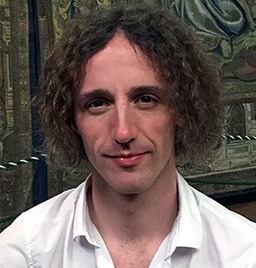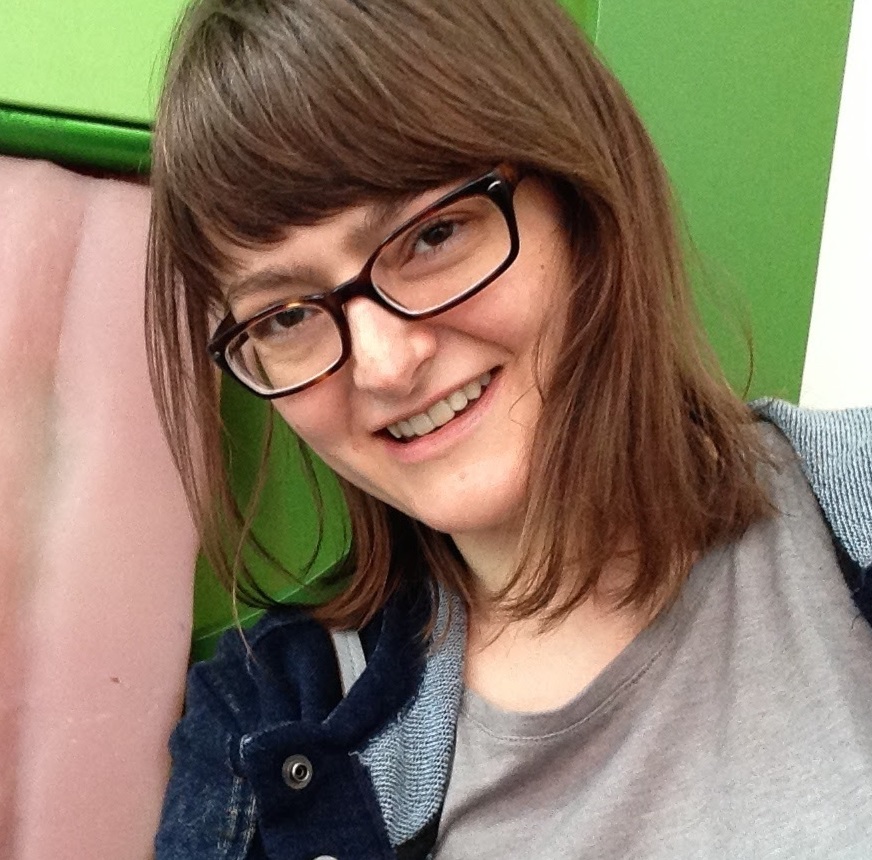

Variance and invariance in Phonological Representation: Insights from Articulation
Organisers
|
|
|
| Sam Kirkham Lancaster University (United Kingdom) |
Patrycja Strycharczuk University of Manchester (United Kingdom) |
Workshop information
Date/Time: 09:00-12:30, Wednesday 26 June 2024
Location: 615, HIT, Hanyang University
Program
| Time | Presenter | Title |
| 09:00-09:15 | Sam Kirkham (Lancaster University, UK) & Patrycja Strycharczuk (University of Manchester, UK) | Introduction: Variance and invariance in phonological representation |
| 09:15-09:45 | Sam Tilsen (Cornell University, USA) | Looking through a microscope through a telescope: Dynamical systems, categories, and the misreading of Marr |
| 09:45-10:15 | Khalil Iskarous (University of Southern California, USA), Jennifer Cole (Northwestern University, USA) & Thomas Sostarics (Northwestern University, USA) | Intonational tunes as compositional, but also autonomous, dynamical objects |
| 10:15-10:45 | Alice Turk (University of Edinburgh, UK), Yuqi Qin (University of Edinburgh, UK), Sonja Schaeffler (Queen Margaret University, UK), James M. Scobbie (Queen Margaret University, UK) & Benjamin Elie (University of Edinburgh, UK) | Timing variability at different parts of movement: Tongue body articulation of yeah in the Doubletalk corpus |
| 10:45-11:00 | Break | |
| 11:00-11:30 | Jason A. Shaw (Yale University, USA) & Sejin Oh (Hanyang Institute for Phonetics and Cognitive Science, Korea) | Parameter dynamics for articulatory gestures |
| 11:30-12:00 | Malgorzata Cavar (Indiana University, USA) & Emily Rudman (Ohio State University, USA) | Variation as a measure of goodness of a category |
| 12:00-12:30 | Discussion |
|
Call for papers
A central concern in laboratory phonology is the architecture of the phonological grammar and its relationship with physically-observable events. At the heart of this lies a fundamental question: what are the invariant physical correlates of abstract phonological categories? The invention of the sound spectrograph in the 1940s was instrumental in the search for invariant relationships between physical parameters and phonological categories (Koenig, Dunn & Lacy, 1946; Blumstein & Stevens, 1979). This search later spanned articulation (Liberman & Mattingly, 1985) and perception (Fowler & Smith, 1986), but evidence for invariant signatures remained partial (Lisker, 1985) and sometimes controversial (Fowler, 1996; Ohala, 1996).
In the intervening decades, research on speech articulation has posed a number of hypotheses concerning the relationship between variable phonetics and invariant phonological structure. Dynamical theories of phonological cognition situate invariance in abstract spatiotemporal representations, with contrast specified by relationships between parameters (Browman & Goldstein, 1992; Iskarous, 2017). Such invariance is likely to be fundamentally dynamic in nature, residing in structural relations between phonetic variation and phonological categories across a parameter range (Shaw, Gafos, Hoole et al., 2011). Despite these advances, however, fundamental questions remain, such as:
1. How do phonological categories emerge? Theories such as Articulatory Phonology/Task Dynamics locate invariance at the level of gestural parameters (Saltzman & Munhall, 1989; Browman & Goldstein, 1992), but how do such categorical distinctions emerge in the first place? Are phonological categories emergent from the inherent dynamics of the gestural system, with a bifurcation at critical parameter values (Iskarous, Steffman & Cole, 2023), or are such categories a matter of parameter specification from a continuous range of values?
2. How do phonological representations change? Sound change is widely hypothesised to stem from a range of sources, including phonologisation of coarticulatory, biomechanical and perceptual biases on speech production (Ohala, 1981; Harrington, Kleber & Reubold, 2011). A change in phonological representation necessarily involves a change in articulatory planning, but how is variance and invariance in planning representations – from the individual speaker to the speech community – conceptualised by different frameworks? Dynamical approaches have increasingly looked to dynamic neural fields to capture changes in representations (Kirov & Gafos, 2007; Roon & Gafos, 2016; Tilsen, 2019; Shaw & Tang, 2023), while symbolic models locate such changes in the phonetic implementation process (Turk & Shattuck-Hufnagel, 2020). What are the implications of these different approaches for our understanding of phonological invariance and sound change?
3. What is the relationship between the articulatory correlates of phonological categories and the corresponding acoustic/perceptual units? While the dynamics and kinematics of articulation are fundamental to speech planning and phonological representation, successful speech communication is necessarily premised upon a relationship between articulation, acoustics and perception. To this end, what is the role of quantal acoustic-articulatory relations in the emergence and specification of invariant relationships between phonetics and phonology? (Stevens, 1989). How should we interpret articulatory evidence for phonological structure in the absence of corresponding acoustic evidence? And to what extent are listeners sensitive to dominant and/or gradient articulatory modes of contrast? (Iskarous, Nam & Whalen, 2010).
It is clear that articulatory-based phonological frameworks are central to our understanding of phonological structure and phonetic variation. At the same time, different frameworks disagree profoundly on the nature of phonological representations, so what kinds of evidence would allow us to distinguish such accounts?
We invite oral presentations for this satellite workshop on the role of articulation in phonological representation, in phonetic variation, and in the architecture of the grammar. This topic necessitates multi-dimensional approaches and we therefore encourage submissions across different frameworks and using diverse methods, including speech production (e.g. EMA, ultrasound, MRI, aerodynamics), articulatory (socio)phonetics, computational modelling, and theoretical research. We particularly welcome submissions that align with the following topics:
- Articulatory variation in the context of phonological representation
- Phonologically-informed theories that explicitly model articulatory variation, such as Articulatory Phonology/Task Dynamics, XT/3C, DIVA, etc.
- Computational modelling of articulatory phonological representations
- The role of articulation in sound change
- Articulation at the interface between phonetics and phonology
- Acoustic-articulatory relations
Submission information
- Please submit a one-page abstract (11pt font), plus one extra page for figures and references, to s.kirkham@lancaster.ac.uk by Friday 29 March 2024 (by the end of the day, Anywhere on Earth time).
- We anticipate that we will allocate 20-30 minute slots to each presentation, but this may be adjusted depending on the quantity and nature of submissions. We will notify authors of the finalised format upon acceptance.
References
Blumstein, Sheila E. & Kenneth N. Stevens. 1979. Acoustic invariance in speech production: evidence from measurements of the spectral characteristics of stop consonants. Journal of the Acoustical Society of America 66(4), 1001–1017.
Browman, Catherine P. & Louis Goldstein. 1992. Articulatory phonology: an overview. Phonetica 49(3-4), 155–180.
Fowler, Carol A. 1996. Listeners do hear sounds, not tongues. Journal of the Acoustical Society of America 99(3), 1730–1741.
Fowler, Carol A. & Mary R. Smith. 1986. Speech perception as “vector analysis”: An approach to the problems of invariance and segmentation. In Joseph S. Perkell & D.H. Klatt (eds.) Invariance and variability in speech processes, 123–139, Hillsdale, NJ: Lawrence Erlbaum.
Harrington, Jonathan, Felicitas Kleber & Ulrich Reubold. 2011. The contributions of the lips and the tongue to the diachronic fronting of high back vowels in Standard Southern British English. Journal of the International Phonetic Association 41(1), 27–46.
Iskarous, Khalil. 2017. The relation between the continuous and the discrete: A note on the first principles of speech dynamics. Journal of Phonetics 64, 8–20.
Iskarous, Khalil, Hosung Nam & D.H. Whalen. 2010. Perception of articulatory dynamics from acoustic signatures. Journal of the Acoustical Society of America 127(6), 3717–3728.
Iskarous, Khalil, Jeremy Steffman & Jennifer Cole. 2023. American English pitch accent dynamics: A minimal model. Proceedings of the 20th International Congress of Phonetic Sciences 1469–1473.
Kirov, Christo & Adamantios I. Gafos. 2007. Dynamic phonetic detail in lexical representations. Proceedings of the 16th International Congress of Phonetic Sciences 637–640.
Koenig, W., H.K. Dunn & L.Y. Lacy. 1946. The sound spectrograph. Journal of the Acoustical Society of America 18(1), 19–49.
Liberman, Alvin M. & G. Mattingly, Ignatius. 1985. The motory theory of speech perception revised. Cognition 21(1), 1–36.
Lisker, Leigh. 1985. The pursuit of invariance in speech signals. Journal of the Acoustical Society of America 77(3), 1199–1202.
Ohala, John J. 1981. The listener as a source of sound change. In Carrie S. Masek, Roberta A. Hendrick & Mary Frances Miller (eds.) Papers from the Parasession on Language and Behavior, 178–203, Chicago, IL: Chicago Linguistics Society.
Ohala, John J. 1996. Speech perception is hearing sounds, not tongues. Journal of the Acoustical Society of America 99(3), 1718–1725.
Roon, Kevin D. & Adamantios I. Gafos. 2016. Perceiving while producing: Modeling the dynamics of phonological planning. Journal of Memory and Language 89(2), 222–243.
Saltzman, Elliot & Kevin G. Munhall. 1989. A dynamical approach to gestural patterning in speech production. Ecological Psychology 1(4), 333–382.
Shaw, Jason A., Adamantios I. Gafos, Philip Hoole & Chakir Zeroual. 2011. Dynamic invariance in the phonetic expression of syllable structure: A case study of Moroccan Arabic consonant cluster. Phonology 28(3), 455–490.
Shaw, Jason A. & Kevin Tang. 2023. A dynamic neural field model of leaky prosody: proof of concept. Proceedings of the Annual Meeting on Phonology 2022 1–12.
Stevens, Kenneth N. 1989. On the quantal nature of speech. Journal of Phonetics 17(1), 3–45.
Tilsen, Sam. 2019. Motoric mechanisms for the emergence of non-local phonological patterns. Frontiers in Psychology 10(2143), 1–25.
Turk, Alice & Stefanie Shattuck-Hufnagel. 2020. Speech Timing: Implications for Theories of Phonology, Phonetics, and Speech Motor Control. Oxford: Oxford University Press.
▶ CorpusPhon
▶ Phonetic imitation: representation, sound change, and other theoretical implications



